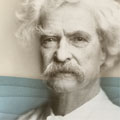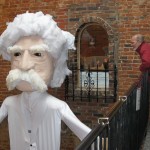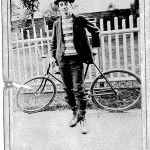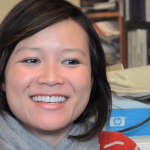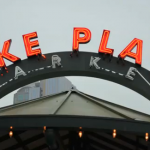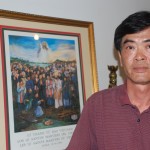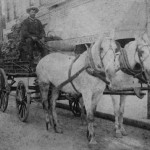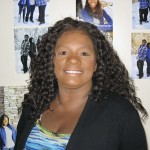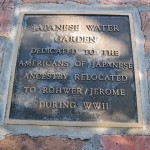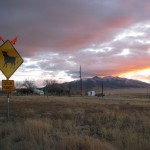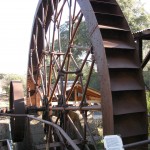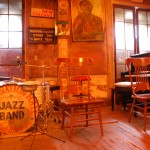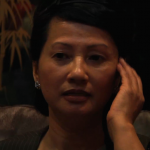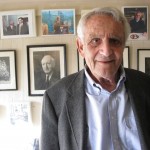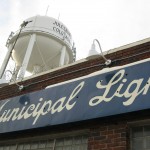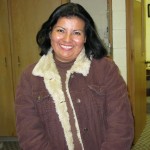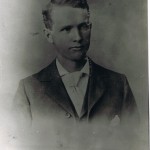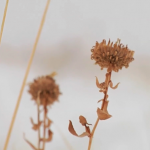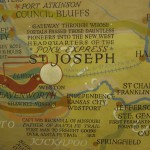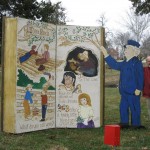Alyssa Karas, Dan Tham and I piled into the backseat of John Ghiglione’s white, 2002 Saturn for the drive to the Seattle home and famous-for-a-day garage of his father, Dr. August J. Ghiglione, who served as Italian consul in the Pacific Northwest during World War I and doctor to Seattle’s Italian-Americans from 1905 to his death in 1949.
The garage became famous in 1910. When the Mafia-style Black Hand tried to shake down members of Seattle’s Italian community, Dr. Ghiglione aided police in breaking up the plot. For a time, Dr. Ghiglione traveled with a body guard and carried a gun in his car.
On this night, he put his Pope-Hartford in the garage at his home, 333 30th Avenue South, and retired for the evening. Normally he would have made house calls after dinner, but his wife, recently discharged from a hospital, felt ill. So he stayed home.
Shortly after midnight the garage exploded. The house’s kitchen door blew open, the house’s windows&mdas;and the windows of houses four blocks away—shattered. Footprints near the garage indicated two men had placed the dynamite, but bloodhounds were unable to follow their trail beyond 29th Avenue. An investigation by Joe Bianchi, an Italian-American detective, went nowhere.
Dr. Ghiglione later told the press that he did not believe the dynamiting pointed to the Blank Hand. “There never was any notification or warning of any impending danger,” he said. He concluded that the bombing was the work of relatives of a Seattle man who was killed by a local police officer. The relatives thought Dr. Ghiglione, as the Italian consul, had been bribed to block the prosecution of the slayer.
When John Ghiglione, Dan, Alyssa and I arrived at the doctor’s address, we were disappointed to see that his garage, rebuilt after the dynamiting, no longer existed and that his three-story house had been carved into five apartments. The building’s front door was locked, but luckily one of the tenants, Carly Reiter, 37, a teacher at Seattle Girls’ School, was walking her 10-year-old cat, Coyote George the River Pig.
A decade earlier, Reiter, a fan of Mark Twain’s Huck Finn, had taken a 2,500-mile, 121-day solo canoe trip down the Mississippi, from Bemidji, Minnesota, to Baton Rouge, Louisiana. Along the way, she happened to stop at a bar. A five-week-old kitten climbed out of a farmer’s milk crate into her lap. Reiter took the cat aboard her canoe where it promptly walked into the water.
But Reiter and Coyote George the River Pig survived the Mississippi and the lecher who told Reiter, “I really like redheads. Their boobs make me perky.” Virtually all of the other people Reiter met along the Mississippi, she said, treated her with respect. Many offered her a free meal and a place to shower and sleep overnight.
Reiter showed us her two-room, $900-a-month apartment in space that once had been second-floor bedrooms in Dr. Ghiglione’s home. She brought out a book of photos from her Mississippi River trip. (Some of the photos are part of Dan Tham’s video interview of Reiter.)
Reiter also introduced us to next-door neighbor Casey Meehan, 27, a fundraiser for nonprofits who shared a four-bedroom, two-bath, $1,700-a-month, second- and third-floor apartment with three other young people.
Reiter described the apartment as a communal house: “We’re using what we need to use—need, not want” to use. The members of the commune did not heat common areas; each person used a small heater in his or her bedroom. They also were composting and starting a garden on the back porch.
Meehan’s description of her community made me think of a different kind of community associated with the building—Dr. Ghiglione’s world from a century earlier. As a student at Columbia University’s medical school he took his bicycle from his home in an Italian-American section of Staten Island aboard the ferry to Manhattan.
There he rode his bicycle to Columbia’s medical school or Columbus Hospital on East 20th Street. He interned at Columbus, run by Mother Supervisor Francesca Xavier Cabrini, the first American canonized by the Roman Catholic Church. Columbus served New York’s Italian-American immigrants.
Dr. Ghiglione’s parents had taken into their Staten Island home Estelle “Stella” M. Skinner, following the early death in an accident of her parents. Skinner and her brother had inherited, Dr. Ghiglione’s children recalled, a piece of property that later turned out to be Coney Island. Dr. Ghiglione graduated from medical school in 1904 and his old-world mother, Maria, arranged his marriage to Stella on Nov. 8, 1905.
Dr. Ghiglione and his new wife moved later that year to Seattle where he established a private practice that served the city’s small Italian community—3,454 residents by 1910—primarily truck gardeners and laborers from southern and central Italy. They lived in neighborhoods with nicknames like “Garlic Gulch.”
They dug sewer and water-main ditches and drove garbage wagons for the city. They also worked at construction sites and in railroad yards and mills. Orly Alia recalled an uncle who stacked 95-pound bags of cement from a rapidly moving line, 10 hours a day, seven days a week. “They were machines,” Alia said. “They wore themselves out and they were gone by the time they were 60.”
Dr. Ghiglione spoke the patients’ Italian dialects, wrote out prescriptions in English or Italian, depending of the patients’ first language, and conveniently forgot to charge patients who lacked the money to pay.
Daughter-in-law Hazel Rispoli recalled: “The old family doctor. He came to your house and never got half the money owed him. The Italians all went for him. They were all poor. You didn’t ask for payment [from them]. It always was, ‘Pay when you can.’”
Dr. Ghiglione developed a reputation as a surgeon who succeeded where others had failed. Ten-year-old Jim Dijulio was brought to him deathly ill. Dr. Ghiglione’s surgery saved his life.
PHOTO
Dr. Ghiglione was elected staff president at Providence Hospital and Columbus Hospitals and president of the Seattle Academy of Surgeons. Despite his success, he operated reluctantly, especially when the diagnosis called for amputation, said niece Marie J. Wilham. “I remember his telling me that if I ever was told an operation was necessary to check with three doctors first.”
Dr. Ghiglione’s father, despite his success in business, had one regret: He never had obtained an education. He spoke English with a Ligurian accent. He saw the clubs that other Seattle businessmen joined as beyond his reach. Dr. Ghiglione more than compensated for what his father perceived as his own failings.
Dr. Ghiglione assumed leadership positions in a variety of civic organizations. He was especially active in the Italian-American community. Maybelle Lucas, his daughter, recalled, “There couldn’t be an Italian picnic that he wasn’t invited to.” He was a member of the Knights of Columbus and the only honorary life member in Seattle of both the Sons of Italy and the Italian Club.
During World War I, while carrying on his medical practice, he served as Italian consul for a region that eventually included Oregon, Washington, Idaho and Montana. He was active in sending 3,000 Italian subjects—who were required to enlist at age 20 for three years of service—to join Italian forces against Austria-Hungary before the United States entered the war. He was decorated twice by Victor Emanuel, Italy’s king, for his war work. He was knighted Cavaliere, and later Cavaliere Ufficiale della Corona d’Italia.
When George E. Ralston disparaged Italian, Chinese and Japanese immigrants in the Seattle Times in 1912, Dr. Ghiglione attacked Ralston’s “ignorance” and “misinformation.” He dismissed Ralston’s call for restrictions in foreign immigration as amounting to “air bubbles” and defended immigrants’ patriotism. He dreamed of an America enriched and enlivened for generations to come by its immigrants.
The excerpt from Dan Tham’s video of our interview of John Ghiglione focuses on his father, Dr. Ghiglione. The excerpt reminds me of lines from a Maya Angelou poem: “Know that history holds more than it seems/We are here alive today because our ancestors dared to dream.”
Loren Ghiglione



